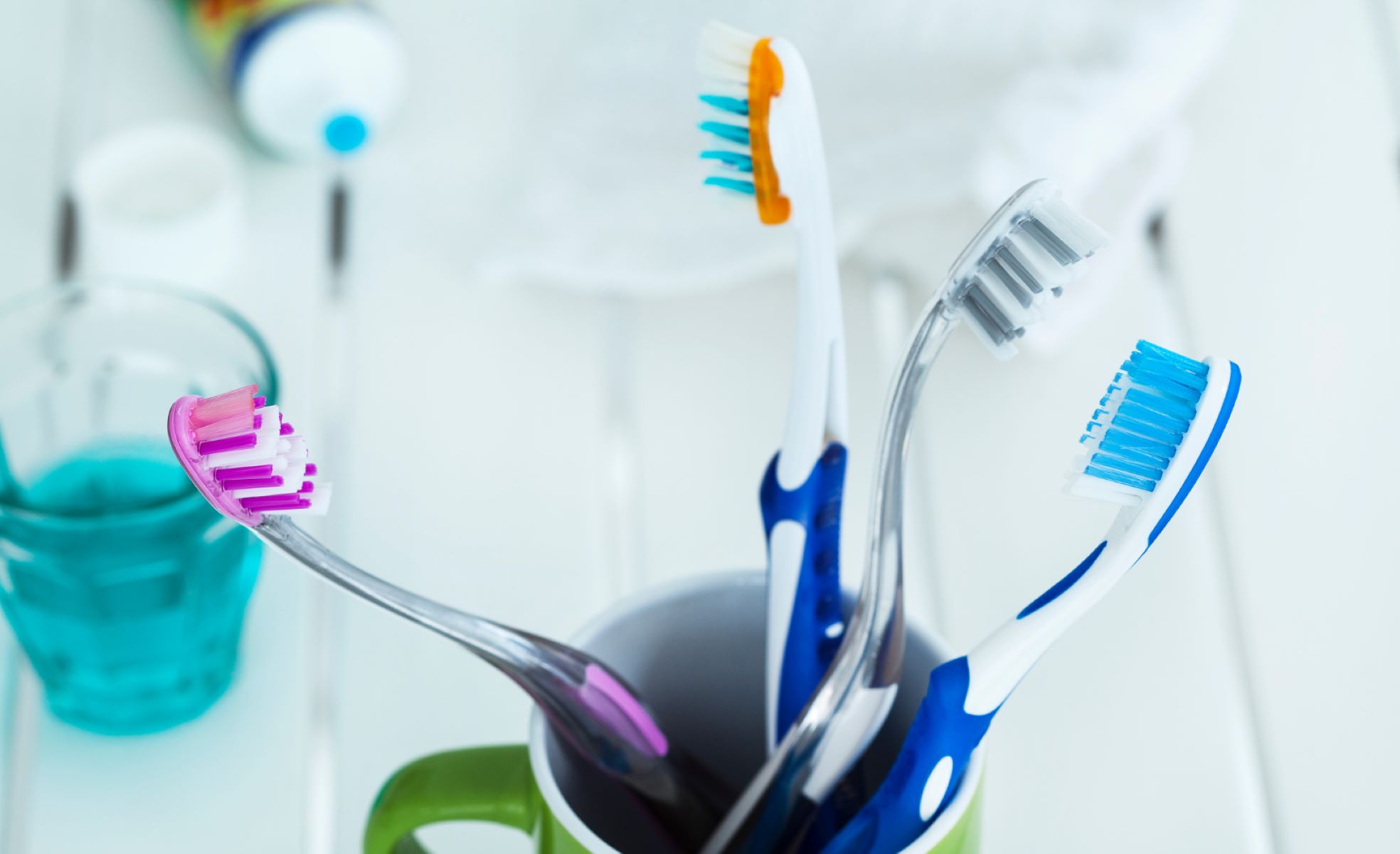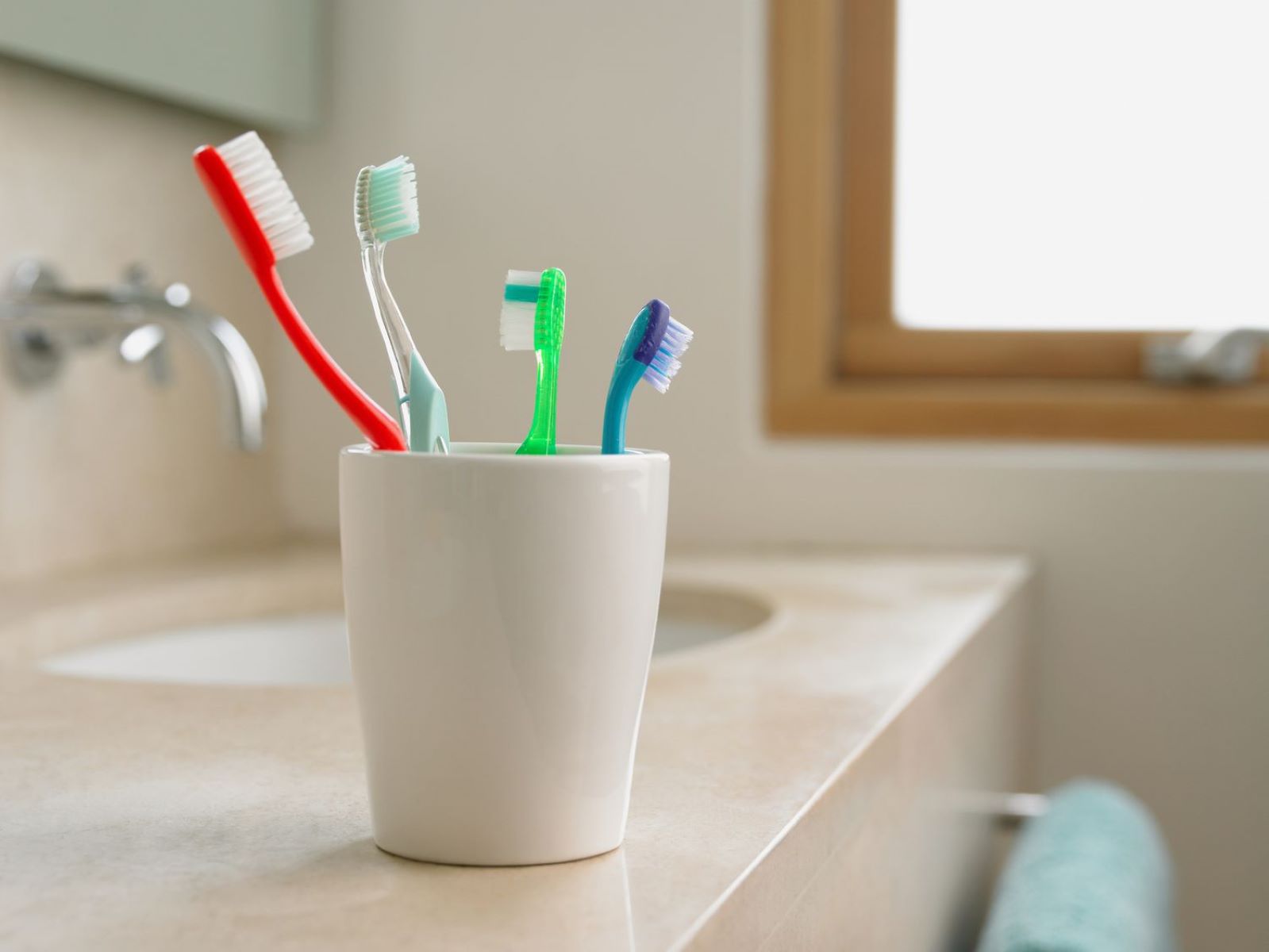Home>Furniture & Design>Bathroom Accessories>How Long Does It Take A Toothbrush To Dry


Bathroom Accessories
How Long Does It Take A Toothbrush To Dry
Modified: October 18, 2024
Discover how long it takes for bathroom accessories like toothbrushes to dry. Learn tips for keeping your bathroom items clean and dry.
(Many of the links in this article redirect to a specific reviewed product. Your purchase of these products through affiliate links helps to generate commission for Storables.com, at no extra cost. Learn more)
Introduction
When it comes to maintaining good oral hygiene, the toothbrush is an indispensable tool. However, have you ever wondered how long it takes for a toothbrush to dry after use? The drying time of a toothbrush can vary depending on several factors, including the type of bristles, the design of the brush head, and the environment in which it is stored. Understanding these factors can help you ensure that your toothbrush remains clean and hygienic for effective oral care.
The drying time of a toothbrush is an important consideration as it directly impacts its cleanliness and effectiveness. A toothbrush that remains damp for an extended period can become a breeding ground for bacteria, mold, and mildew, posing potential health risks. Therefore, knowing how long it takes for a toothbrush to dry and the factors that influence this process is crucial for maintaining optimal oral hygiene.
In this article, we will delve into the various factors that affect the drying time of a toothbrush, explore the different types of toothbrushes and their respective drying times, and provide practical tips for speeding up the drying process. By gaining insights into these aspects, you can make informed decisions about the care and maintenance of your toothbrush, ultimately contributing to better oral health and overall well-being.
Key Takeaways:
- Ensure your toothbrush dries completely to prevent bacteria and mold growth. Factors like bristle density, design, storage, and cleaning impact drying time.
- Choose a toothbrush with a drying time that fits your lifestyle. Shake off water, use a holder with drainage, and optimize air circulation for faster drying.
Read more: How Long Does It Take For Brick To Dry
Factors Affecting Drying Time
The drying time of a toothbrush is influenced by several key factors, each of which plays a significant role in determining how long it takes for the bristles to dry completely. Understanding these factors is essential for effectively managing the drying process and maintaining the hygiene of your toothbrush.
-
Bristle Density and Material: The density and material of the bristles can impact the drying time of a toothbrush. Bristles that are densely packed or made from materials that retain moisture, such as nylon, may take longer to dry compared to those with a more open design or made from quick-drying materials.
-
Design of the Brush Head: The shape and design of the brush head can also affect drying time. Toothbrushes with compact, tightly clustered bristles may trap moisture more easily, prolonging the drying process. Conversely, toothbrushes with a more open and ventilated design allow for better airflow, facilitating quicker drying.
-
Storage Environment: The environment in which the toothbrush is stored plays a crucial role in determining its drying time. A toothbrush stored in a humid or poorly ventilated area will take longer to dry compared to one stored in a dry, well-ventilated space. Proper air circulation is essential for expediting the evaporation of moisture from the bristles.
-
Frequency of Use: The frequency with which the toothbrush is used also impacts its drying time. A toothbrush that is used multiple times throughout the day may not have sufficient time to dry between uses, especially if it is stored in a less-than-ideal environment. This can lead to a perpetually damp toothbrush, creating an environment conducive to bacterial growth.
-
Cleaning and Maintenance: Proper cleaning and maintenance of the toothbrush can influence its drying time. Residual toothpaste, debris, and moisture trapped in the bristles can impede the drying process. Regularly rinsing the toothbrush thoroughly after each use and allowing it to air dry can help mitigate this issue.
By considering these factors, you can gain valuable insights into the dynamics of toothbrush drying and take proactive steps to optimize the drying time of your toothbrush. This understanding empowers you to make informed choices regarding the selection, usage, and care of your toothbrush, ultimately contributing to improved oral hygiene and overall well-being.
Different Types of Toothbrushes and Their Drying Time
The drying time of a toothbrush can vary depending on the specific type and design of the brush. Understanding the characteristics of different toothbrushes and their respective drying times can provide valuable insights into selecting the most suitable option for your oral care needs.
Traditional Manual Toothbrushes
Traditional manual toothbrushes, characterized by their familiar handle and bristle configuration, are a popular choice for many individuals. The drying time of these toothbrushes can range from 4 to 8 hours, depending on factors such as bristle density, material, and the storage environment. Toothbrushes with tightly packed bristles may take longer to dry, especially if they are stored in a humid or poorly ventilated area. Conversely, manual toothbrushes with more open bristle designs and quick-drying materials may exhibit shorter drying times.
Electric Toothbrushes
Electric toothbrushes, equipped with powered brush heads that oscillate or rotate, offer a convenient and efficient approach to oral hygiene. The drying time of electric toothbrushes can vary, typically ranging from 4 to 6 hours. The design of the brush head, including the arrangement and density of bristles, can influence the drying process. Additionally, the charging base or storage unit for electric toothbrushes may impact their drying time, as proper ventilation and airflow are essential for expediting the evaporation of moisture from the bristles.
Read more: How Long Does It Take For A Driveway To Dry
Bamboo Toothbrushes
Bamboo toothbrushes have gained popularity as an eco-friendly alternative to traditional plastic toothbrushes. The drying time of bamboo toothbrushes is comparable to that of manual toothbrushes, typically ranging from 4 to 8 hours. The natural properties of bamboo, including its moisture-wicking ability, contribute to the efficient drying of the bristles. However, proper storage in a dry, well-ventilated area is essential to ensure optimal drying and prevent the growth of mold or mildew on the bamboo handle.
Travel Toothbrushes
Compact and portable, travel toothbrushes are designed for on-the-go convenience. The drying time of travel toothbrushes is relatively quick, typically ranging from 2 to 4 hours. The compact size and open design of the bristles facilitate rapid evaporation of moisture, making them ideal for use during travel or in situations where immediate drying is necessary.
By understanding the drying times associated with different types of toothbrushes, individuals can make informed choices based on their specific preferences and lifestyle needs. Selecting a toothbrush with an appropriate drying time can contribute to maintaining optimal oral hygiene and ensuring the cleanliness and effectiveness of the brush for daily use.
Tips for Speeding Up the Drying Process
Ensuring that your toothbrush dries efficiently after each use is essential for maintaining its cleanliness and preventing the proliferation of harmful bacteria and mold. By implementing the following tips, you can expedite the drying process and promote optimal oral hygiene:
-
Shake Off Excess Water: After rinsing your toothbrush, gently shake it to remove excess water from the bristles. This simple action can significantly reduce the initial moisture content, expediting the subsequent drying process.
-
Use a Toothbrush Holder with Drainage: Opt for a toothbrush holder or stand that features drainage holes or a perforated design. This allows water to drain away from the bristles, preventing the accumulation of moisture and promoting faster drying.
-
Position the Toothbrush Vertically: Store your toothbrush in an upright, vertical position to facilitate better airflow around the bristles. This orientation encourages efficient evaporation of moisture and helps prevent the formation of damp spots that can prolong drying time.
-
Utilize a Toothbrush Sanitizer: Consider using a toothbrush sanitizer or sterilizer, which can help reduce moisture and inhibit the growth of bacteria on the bristles. These devices often incorporate UV light or heat to expedite drying and sanitize the toothbrush between uses.
-
Optimize Air Circulation: Choose a well-ventilated area for storing your toothbrush. Proper air circulation is crucial for promoting rapid drying, so avoid enclosed spaces or containers that restrict airflow around the bristles.
-
Rotate Between Multiple Toothbrushes: If feasible, consider using multiple toothbrushes in rotation. Allowing a toothbrush ample time to dry between uses can help prevent the accumulation of moisture and promote overall hygiene.
-
Regularly Replace Your Toothbrush: Over time, the bristles of a toothbrush can become worn and less effective at repelling moisture. By replacing your toothbrush every three to four months, you can ensure that you are using a brush with optimal drying capabilities.
By incorporating these practical tips into your oral care routine, you can expedite the drying process of your toothbrush and maintain a hygienic and effective tool for promoting oral health. Implementing these strategies not only contributes to the cleanliness and longevity of your toothbrush but also supports your overall oral hygiene efforts.
Conclusion
In conclusion, the drying time of a toothbrush is a crucial aspect of maintaining optimal oral hygiene and preventing the proliferation of harmful bacteria and mold. By considering the various factors that influence drying time, individuals can make informed decisions regarding the selection, usage, and care of their toothbrushes. Factors such as bristle density and material, the design of the brush head, storage environment, frequency of use, and cleaning and maintenance all play significant roles in determining how long it takes for a toothbrush to dry completely.
Understanding the drying times associated with different types of toothbrushes, including traditional manual toothbrushes, electric toothbrushes, bamboo toothbrushes, and travel toothbrushes, empowers individuals to choose a brush that aligns with their specific preferences and lifestyle needs. Whether opting for a manual toothbrush with densely packed bristles or an electric toothbrush with a powered brush head, being aware of the expected drying time can contribute to maintaining optimal oral hygiene and ensuring the cleanliness and effectiveness of the brush for daily use.
Moreover, implementing practical tips for speeding up the drying process, such as shaking off excess water, using a toothbrush holder with drainage, positioning the toothbrush vertically, utilizing a toothbrush sanitizer, optimizing air circulation, rotating between multiple toothbrushes, and regularly replacing the toothbrush, can significantly expedite the drying process and promote overall hygiene.
By prioritizing the efficient drying of toothbrushes, individuals can mitigate the risk of bacterial contamination and mold growth, ultimately contributing to improved oral health and overall well-being. The simple yet impactful act of ensuring that a toothbrush dries thoroughly after each use can make a substantial difference in maintaining a clean and hygienic oral care tool.
In essence, understanding the dynamics of toothbrush drying time and implementing proactive measures to expedite the process are integral components of a comprehensive oral hygiene regimen. By incorporating these insights and strategies into daily oral care routines, individuals can uphold the cleanliness, effectiveness, and hygiene of their toothbrushes, ultimately supporting their broader efforts toward optimal oral health.
Frequently Asked Questions about How Long Does It Take A Toothbrush To Dry
Was this page helpful?
At Storables.com, we guarantee accurate and reliable information. Our content, validated by Expert Board Contributors, is crafted following stringent Editorial Policies. We're committed to providing you with well-researched, expert-backed insights for all your informational needs.















0 thoughts on “How Long Does It Take A Toothbrush To Dry”